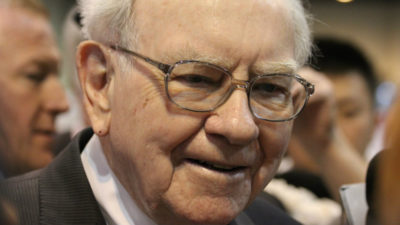Once-maligned integrated energy major Husky Energy (TSX: HSE) continues to go from strength-to-strength as it builds on its three pillars strategy. This strategy has seen the company focus specifically on the development of its Canadian heavy oil assets, its Asia Pacific natural gas assets, and light oil assets in the Atlantic.
Already it has generated significant improvements in the company’s operational and financial performance with production, operational cash flow, and net earnings continuing to grow. Husky continues to unlock value for shareholders, making it a core holding in any energy investor’s portfolio.
1. Operational and financial results continue to strengthen
For the first quarter 2014, Husky reported some solid operational and financial results. Key among them was a healthy increase in production, which jumped 6% compared to the previous quarter and 1.4% compared to the same quarter in the previous year.
The solid growth in crude production can be primarily attributed to the commissioning and production ramp-up at the Sandall heavy oil thermal development coupled with improved operating performance at Terra Nova.
Husky’s operating netback per barrel – a key measure of operational profitability – also shot up a healthy 16% quarter-over-quarter and a massive 41% year-over-year to $44.81, giving Husky one of the better netbacks in the patch.
This netback per barrel figure is superior to the average for oil companies operating in North America, which is around $42 per barrel. It is also higher than many of Husky’s peers, being 58% higher than Talisman’s (TSX: TLM)(NYSE: TLM) netback per barrel and 42% greater than EnCana’s (TSX: ECA)(NYSE: ECA).
The solid growth in Husky’s netback can be attributed to higher realized crude prices coupled with narrowing price differentials between Canadian light and heavy crude against the West Texas Intermediate benchmark.
All of these positive developments were key contributors to Husky’s ability to boost operating cash flow by an impressive 34% compared to the previous quarter and 20% for the same quarter in the previous year.
As a result, Husky’s first quarter net-earnings grew by an impressive three times quarter-over-quarter and 24% year-over.-year, highlighting the growing strength of its operations.
2. Three pillars strategy continues to deliver results
Husky’s strategy of developing its three major growth pillars in the Asia Pacific, Canada’s oil sands and the Atlantic Region coupled with its downstream assets providing specialized support to upstream operations is paying dividends for investors.
The company has been able to routinely boost production as well as its financial results, but has yet to increase its dividend with the majority of excess cash being directed to exploration and development of its assets. Despite this, Husky still pays a quarterly dividend of $0.30, giving it a solid dividend yield in excess of 3% with a very conservative dividend payout ratio of 44%, highlighting the sustainability of the dividend.
This emphasizes just how Husky is continuing unlock shareholder value through the implementation of its strategic plan.
3. Solid portfolio of projects under development
But the good news for investors doesn’t stop there, Husky remains committed to continuing to develop its assets and grow production over the long term. Heavy oil production is set to grow significantly between now and 2016 with four projects set to come online during that period.
These projects are the 10,000-barrel-a-day Rush Lake heavy oil thermal development, scheduled for first production in late 2015, the 10,000-barrel-a-day Edam East and Vawn thermal projects scheduled for first production in 2016 and the 3,500-barrel-a-day Edam West thermal project set to commence production in 2016. As such by the end of 2016 Husky’s heavy oil production will have grown by 33,500 barrels of crude daily.
More importantly, Husky’s much vaunted Liwan Gas Project commenced production during the first quarter 2014, with natural gas sales to the Guangdong natural gas market commencing in April 2014. This project is a major development for Husky, being its largest project to date, and the first deep-water natural gas project located offshore of China.
It gives Husky access to one of the largest energy markets in the world, which will continue to expand given China’s extraordinary rate of economic growth. Natural gas produced from the field is expected to be sold at a rate of $11 to $13 per thousand cubic feet, which is a premium of 23% to 46% over the current market price. This removes much of the uncertainty surrounding volatile natural gas prices providing Husky with a stable revenue stream.
Husky also continues to develop its Atlantic assets with drilling is set to resume on the North Amethyst Hibernia formation which is scheduled for first production in late 2014.
All of which bodes well for Husky to continue growing production, revenues, cash flow and ultimately profitability over the medium to long term.
4. Remains attractively valued
Despite its share price spiking 21% over the last year, Husky remains attractively priced, with an enterprise value of 7 times its EBITDA and 15 times its oil reserves. This makes it more attractive than Talisman, which is trading with an EV of 8 times EBITDA, and Encana, which is trading with an EV of 9 times its EBITDA.
The successful implementation of Husky’s strategic plan continues to pay dividends for investors with the company continuing to deliver value for shareholders. Not only have operational results improved, but it continues to deliver strong financial results, which means shareholders are rewarded with a healthy and steadily increasing dividend.







